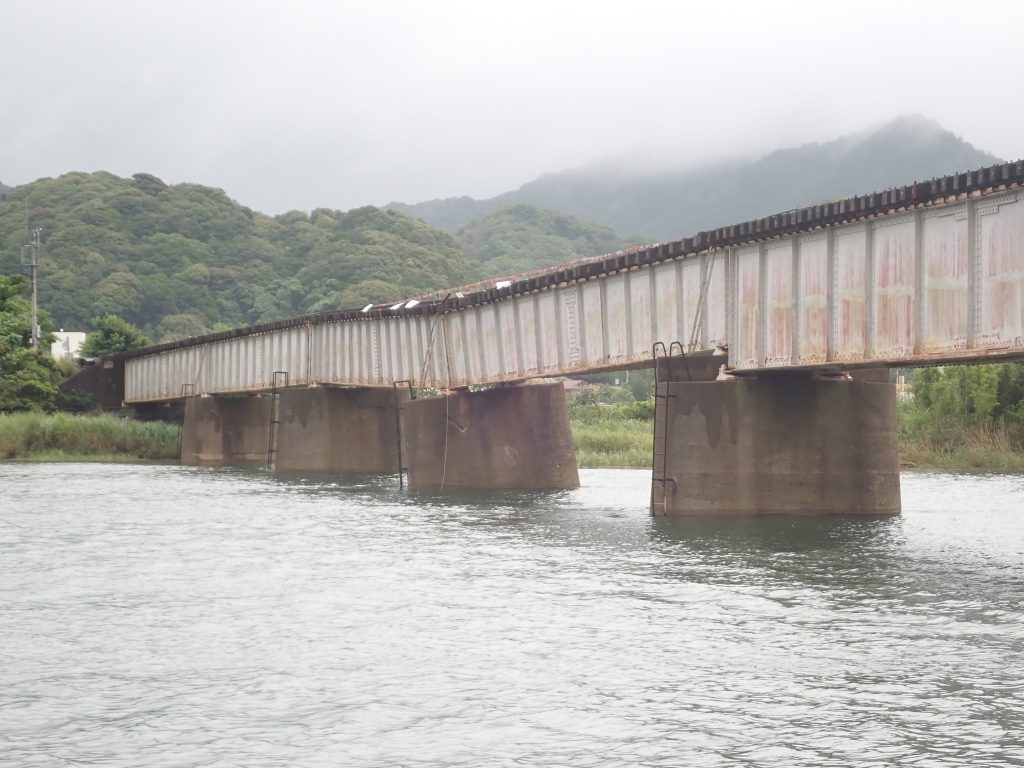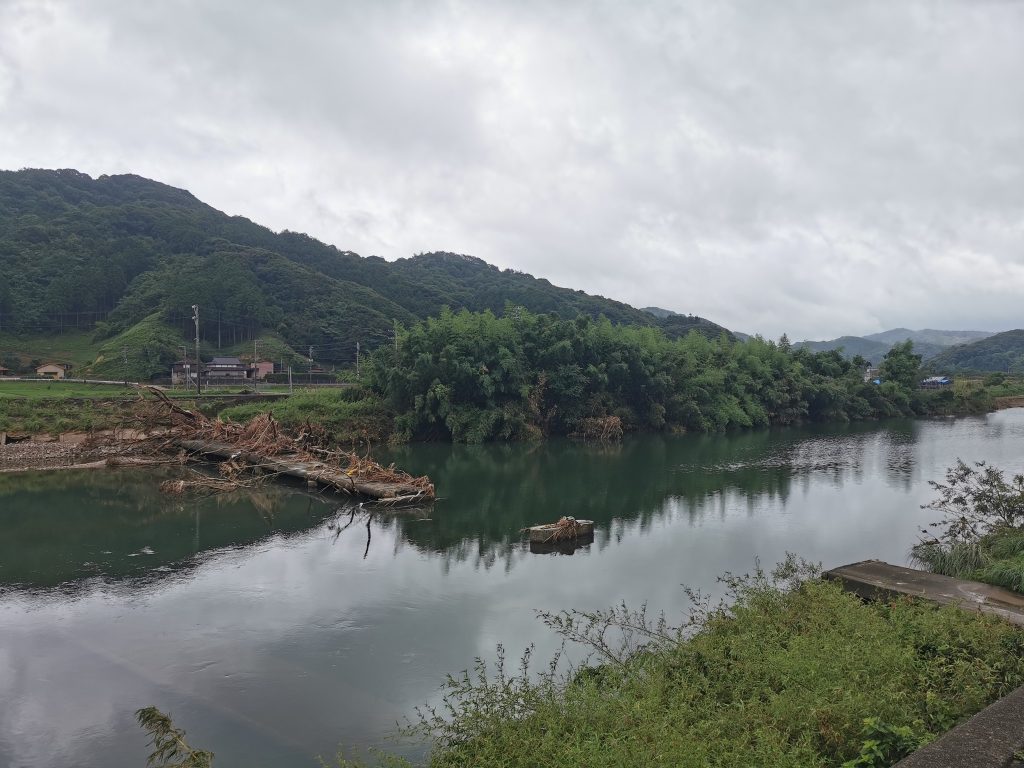7月19日に今月上旬の豪雨で被災した山口県内の河川橋りょうの調査に行きました。研究室で河川橋りょう基礎の洗掘問題を研究する学生2名(M1、B4)と、私のゼミを受講する学部3年生1名にも同行してもらいました。被災後2週間が経ちますが、生々しい災害の爪痕が残っており、当日の雨量・出水の規模の大きさがよく分かりました。今回被災した河川橋りょうや盛土について、同等の豪雨・出水にも耐えられるような構造に強化復旧するためには被災の原因を究明することが必要で、何よりも相当なコストがかかると思います。
大学の授業で「赤字であるものの地元にとって大事な地方鉄道は、今後さらに激甚化し得る自然災害とどう向き合っていくべきか」について良く話をしますが、まずは現場に行き、昨今の豪雨の規模・被害の甚大さを肌で感じることも重要だと思いました。防災・減災に貢献できる基礎研究を今後も続けます。
On July 19, we visited to Yamaguchi Prefecture (west of Japan) to survey river bridges damaged by the torrential rains in early July. Two students studying the scour & erosion problem of river bridge pier foundations in my lab. and undergraduate student joined us. Although two weeks have passed since the disaster, there were still fresh traces of the disaster, and we could clearly see the scale of the rainfall and flood at the site.
I am afraid that re-construction cost becomes very high to strengthen and restore the damaged river bridges and embankment so that it can withstand the same level of heavy rainfall and flood.
In my classes at UTokyo, I often talk about “how local railway lines, which are important to the local community but unprofitable lines, should face with natural disasters, which are becoming even more severe recently”. In order to make such discussions fruitful, I think it is important to first experience the scale of the recent natural disasters directly at the site.


